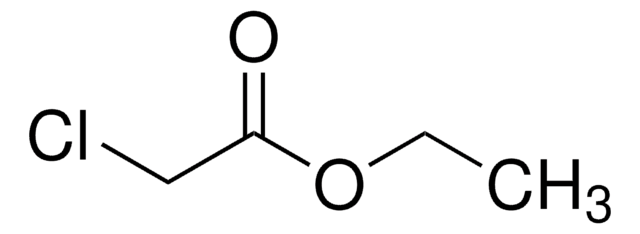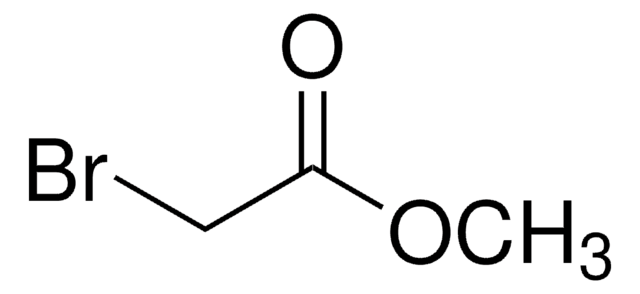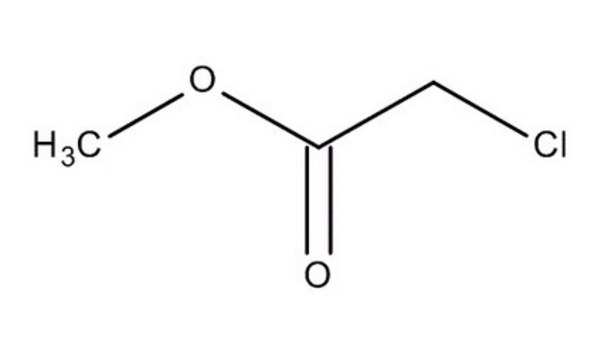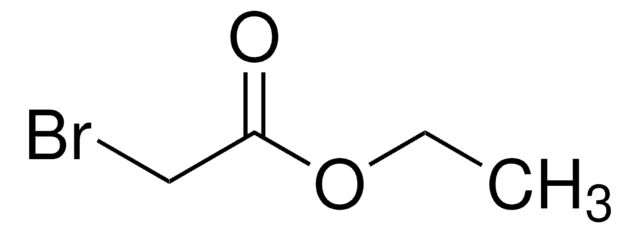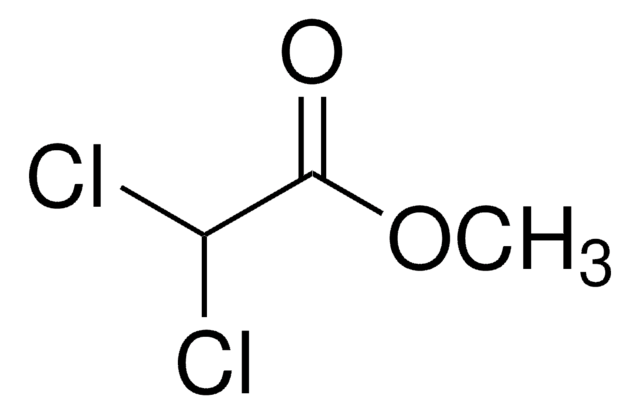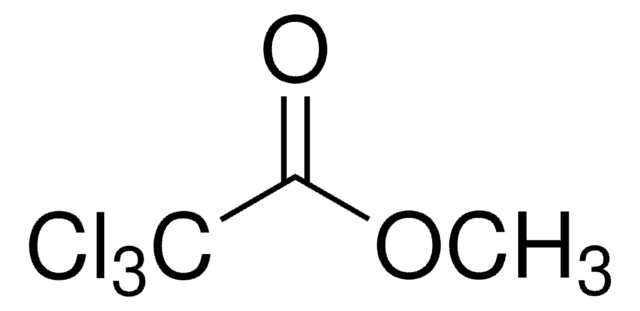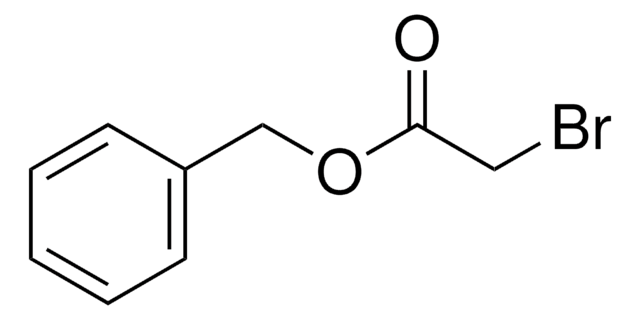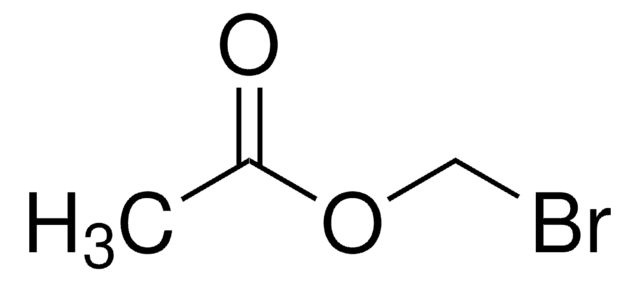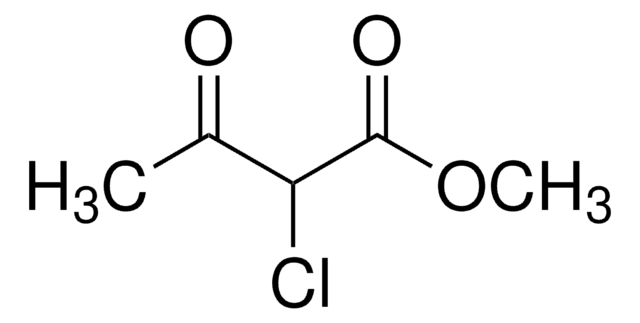108413
Methyl chloroacetate
99%
Synonym(s):
Chloroacetic acid methyl ester, Methyl 2-chloroacetate
About This Item
Recommended Products
vapor density
3.8 (vs air)
Quality Level
vapor pressure
10 mmHg ( 25 °C)
5.25 mmHg ( 20 °C)
Assay
99%
autoignition temp.
869 °F
expl. lim.
18.5 %
refractive index
n20/D 1.422 (lit.)
bp
130 °C/740 mmHg (lit.)
mp
−33 °C (lit.)
solubility
H2O: insoluble
alcohol: miscible
diethyl ether: miscible
density
1.238 g/mL at 25 °C (lit.)
functional group
chloro
ester
SMILES string
COC(=O)CCl
InChI
1S/C3H5ClO2/c1-6-3(5)2-4/h2H2,1H3
InChI key
QABLOFMHHSOFRJ-UHFFFAOYSA-N
Looking for similar products? Visit Product Comparison Guide
Related Categories
General description
Application
Signal Word
Danger
Hazard Statements
Precautionary Statements
Hazard Classifications
Acute Tox. 3 Inhalation - Acute Tox. 3 Oral - Eye Dam. 1 - Flam. Liq. 3 - Skin Irrit. 2 - STOT SE 3
Target Organs
Respiratory system
Storage Class Code
3 - Flammable liquids
WGK
WGK 3
Flash Point(F)
116.6 °F - closed cup
Flash Point(C)
47 °C - closed cup
Personal Protective Equipment
Regulatory Information
Choose from one of the most recent versions:
Already Own This Product?
Find documentation for the products that you have recently purchased in the Document Library.
Our team of scientists has experience in all areas of research including Life Science, Material Science, Chemical Synthesis, Chromatography, Analytical and many others.
Contact Technical Service